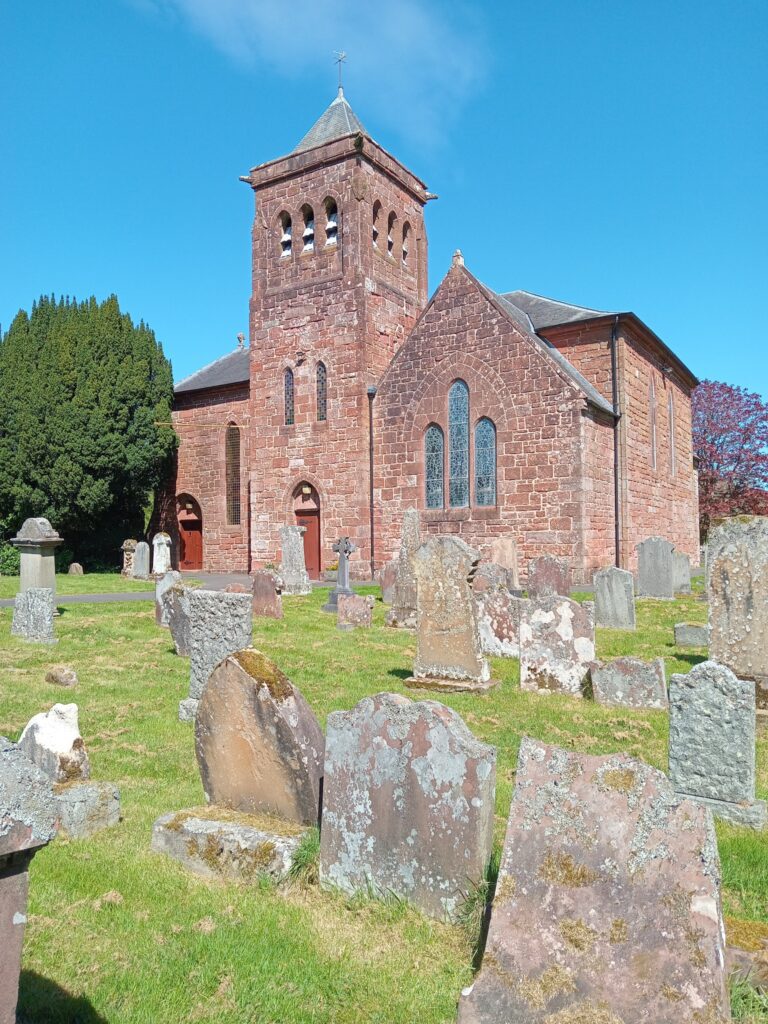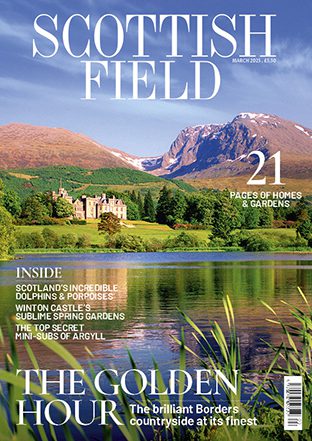
The search for the house of the soldier turned Quaker Lt. Colonel William Osburne
Fiona Fleming explores the history of Quakers in Scotland and the life of Lt. Colonel William Osburne.
Beside a quiet back road on the outskirts of Kirkintilloch lies an overgrown plot of ground enclosed within a drystane dyke, marked out on approach by a small group of trees.
Long grass and brambles abound, a haven for wildlife undisturbed by any human activity, this is the old Quaker burial ground at Gartshore, the final resting place of families long gone and forgotten.
Constructed around 1674, the land had been given to the Quakers by the laird of Gartshore, Robert Smailey.
But why Quakers, and why there?
Quakerism was founded in England in 1647 and reached Scotland in 1653 where meetings were first established in Lanarkshire and shortly thereafter at Gartshore and Bedcow, and later in Edinburgh and Aberdeen.
The founder of the Quaker movement, George Fox, first visited Scotland in 1657. Prior to his departure from the north of England he had requested Colonel William Osburne to come and meet him before the whole party proceeded north.
Along the way he called at the meetings in Lanarkshire and then those in Gartshore and Bedcow where they ‘had a meeting and an abundance of people came to it and were convinced’. From there they went on to Osburne’s house.
While the original buildings of Bedcow and Gartshore have disappeared, farms bearing their names still exist on the sites but no exact location is provided for Osburne’s residence, the Campsies being the general area suggested.
As Osburne was a significant figure in the early days of Quakerism in Scotland and the seminal work, The Scotch Priests’ Principles, was compiled by Fox and others at his house, would it now be possible to find its location after the passage of so much time?
In the absence of anything of relevance in the sasines, perhaps a wider search would reveal some clues about the man himself.
Osburne, formerly a lieutenant-colonel in the Parliamentary Army, had retired by the time he was ‘convinced’, probably in 1653 while he was still living in Edinburgh, and he is believed to have been one of the first Quaker preachers in Scotland. The earliest meetings in the capital were held at his house there until he moved west around 1657.
He was born in Edinburgh in September 1624 and was the second of six children of Henrie Osburne, Writer, and Jonet Stuart and married Agnes Cuninghame in Edinburgh on 1 July 1652.
The baptism of Osburne’s own son William on 13 February 1653, also in Edinburgh, was witnessed by writer James Campbell and three members of the Cunningham family all from Ayrshire.
The connection to that county is confirmed in a birth entry in 1627 for Agnes Cuninghame: ‘Mr. William Cuninghame of Brown-hill and Rebecca Mooreheid, a daughter named Agnes.’
By the time Osburne moved west he had good reason to leave Edinburgh.
Much persecution was suffered by the early Quakers. Their efforts to ‘convince’ the populace was met with considerable animosity: ‘This sect of Quakers is like to prove troublesome.’ And Osburne himself was singled out: ‘Lieutenant Osburne, one of our first apostates to the English, and betrayers to his power of our armie, for which he had great favours and rewards from Cromwell himself, is ane open leader to them in the streets of Edinburgh, without any punishment.’

The present church in Balfron, the parish in which William Osburne ‘got a footing’.
The Quaker campaigners were often rounded up and thrown into prison, and as ‘a zealous preacher’ Osburne also met with such a fate: ‘Captaine Govan was cast in the tolbooth for a long tyme in irons ; Jafray of Aberdeen, Osburne the Quaker, were likewise put in the tolbooth.’
Quaker evangelists roamed the countryside preaching, often disrupting church services and as a result were sometimes expelled from the Church.
Osburne himself was guilty of such behaviour and a record of his resultant excommunication provided the first breakthrough in finding his residence in the Campsie area.
In, Strathendrick and its Inhabitants from Early Times, J Guthrie Smith writes that ‘a certain William Osburne…..got a footing in Balfron’ during a lengthy vacancy in the charge.
On the day the new minister, Rev. William Stirling, was admitted ( 11 June 1656) William Osburne ‘did intrude himself on the congregation, and made a tumult with odious speeches’.
Following further misconduct he was publicly excommunicated on 22 September 1657. Later, a call by the Kirk Session of Baldernock to Rev Stirling to take charge of the parish was refused by the Presbytery which considered him to be ‘ane strong ward against the working of William Osburne and other sectaries repairing to these bounds’.
A random search in the National Records of Scotland revealed that on 1 August 1652, exactly one month after William Osburne’s marriage, Mr William Cunyngham of Ballindalloch sub-let to Osburne lands in the parish of Riccarton, Ayrshire, subjects of a lease by Sir William Cunynghame of Caprintoun, Ayrshire.
There are two places in Scotland bearing the name Ballindalloch. One is in Banffshire, the other is in Stirlingshire, near Balfron, in the foothills of the Campsie Fells.
But how do the Ayrshire Cunninghams come to have an interest in a property in Stirlingshire and how does this connect to William Osburne?
In addition to their lands in Ayrshire, Cunninghams had estates in Stirlingshire dating from at least the 14th century, including Ballindalloch. The estate of Ballindalloch is now much reduced and the original buildings no longer exist.
As for William Osburne – in the records for the sub-lease the parties are designated: ‘Mr William Cunyngham of Ballindalloch…to Major William Osburne, his nephew and son-in-law’. It would appear that William Osburne had married his cousin.
And for further evidence, we find in Guthrie Smith’s history of Strathendrick, reference a document witnessed by ‘Henrie Osburne, sone lawfull of William Osburne of Ballindalloch’.
So it would appear that the soldier turned Quaker was at some time installed in the lands of Ballindalloch and, like other ‘sectaries’, ‘got a footing in Balfron’.
Read more News stories here.
Subscribe to read the latest issue of Scottish Field.
TAGS

